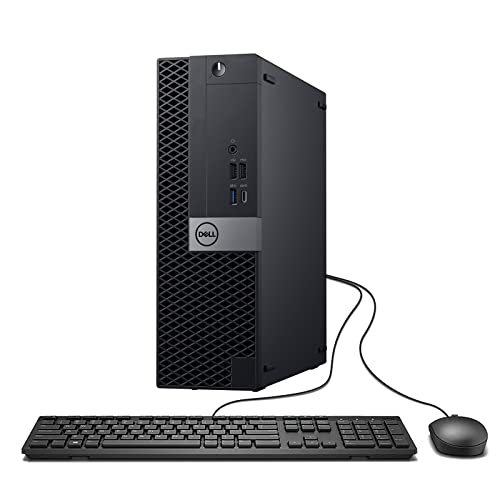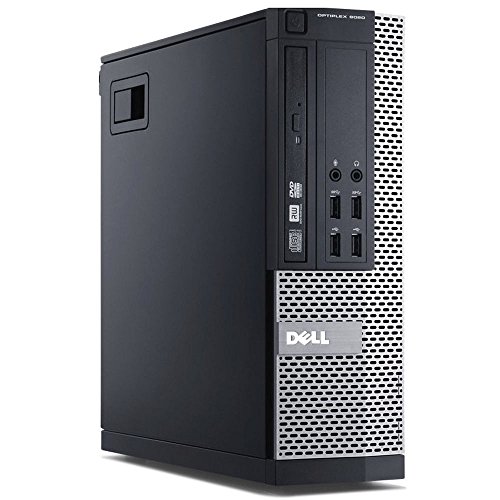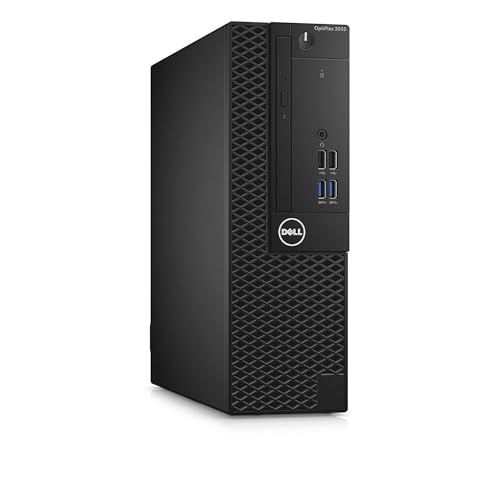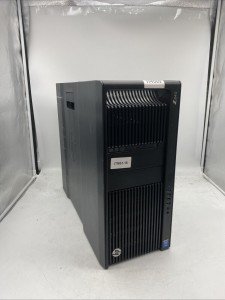Pushing the Boundaries of Immersive Experiences
In the rapidly evolving domain of virtual reality (VR), developers require an advanced, high-performance workstation capable of handling complex 3D rendering, simulation, and real-time interactivity. A custom PC for VR development transforms raw computing power into a versatile creative engine that speeds up prototyping, streamlines testing, and refines immersive applications. This comprehensive guide explores the key components, design strategies, and optimization techniques necessary to build a state-of-the-art VR development system that is both future-proof and scalable.
---
#### High-Performance CPU: The Backbone of Real-Time Development
Virtual reality development demands rapid computational responsiveness to facilitate complex physics simulations, interactive environments, and real-time feedback loops.
- **Multi-Core, High-Frequency Processing:**
Select a processor with a high core count and impressive clock speeds—options such as Intel’s Core i9 or AMD’s Ryzen 9/Threadripper series are ideal for multitasking. These CPUs accelerate compile times, engine code execution, and simultaneous running of multiple development tools.
- **Virtualization and Emulation:**
For environments where developers utilize emulators or run multiple instances of the VR engine to test different configurations, hardware virtualization support (Intel VT-x or AMD-V) is crucial to ensure efficient resource sharing and smooth performance under heavy loads.
---
#### Advanced GPU Acceleration: Bringing Virtual Worlds to Life
In VR, the graphics card plays a pivotal role not only in rendering stunning visuals but also in handling complex lighting, shading, and simulation tasks that transform a virtual environment into a believable experience.
- **Cutting-Edge Graphics Cards:**
Opt for professional or high-end consumer GPUs such as NVIDIA’s GeForce RTX or AMD’s Radeon RX series. These cards provide abundant VRAM and computing cores vital for real-time ray tracing, shader computations, and rendering high-resolution textures.
- **Compute Frameworks and AI Integration:**
Leverage APIs like CUDA, DirectX 12 Ultimate, and Vulkan to accelerate graphics processing and integrate machine learning algorithms that automate asset optimization and enhance image quality. GPU acceleration dramatically reduces render times, making iterations quicker during the crucial development phases.
---
#### Memory and Storage: Accelerating Data-Intensive Workflows
VR projects typically involve large-scale 3D environments, high-resolution textures, and intricate models that consume significant amounts of system memory and storage space.
- **Ample, High-Speed Memory:**
Equip your workstation with at least 32GB of DDR4 or DDR5 RAM; advanced VR development workflows might demand 64GB or more. This ensures that the system can cache numerous assets, run simultaneous virtual machines, and handle complex computational tasks without stuttering.
- **Ultra-Fast NVMe Storage:**
An NVMe SSD is critical for significantly enhancing boot times, application launches, and the loading of large project files. A hybrid storage configuration—coupling an NVMe drive for active projects with additional high-capacity SATA SSDs or HDDs for archival purposes—ensures both speed and sufficient data storage.
---
#### Connectivity and Peripheral Integration: Creating an Immersive Ecosystem
A versatile VR development system requires extensive connectivity to bridge the gap between creative software and the physical components of the VR setup.
- **Robust I/O and Networking:**
Select a motherboard that features a wide array of ports such as USB 3.2, Thunderbolt, and multiple display outputs to support VR headsets, 3D cameras, motion capture devices, and external peripherals. High-speed Gigabit Ethernet (or even 10GbE) enhances data transfer rates necessary for streaming real-time feedback between VR devices and remote servers.
- **Multi-Monitor Flexibility:**
A multi-monitor setup is essential for developers who must simultaneously run the VR development environment, asset management software, debugging tools, and real-time performance dashboards. These expansive workspaces facilitate efficient multitasking and collaborative project management.
---
#### Cooling, Stability, and Noise Management: Ensuring 24/7 Performance
VR development often involves long coding sessions, rigorous simulation testing, and demanding rendering tasks that generate considerable heat. Maintaining a stable operating temperature is crucial to prevent thermal throttling and preserve component longevity.
- **Efficient Thermal Management:**
Invest in high-quality air cooling systems with smart fan controllers or consider a custom liquid cooling loop that delivers exceptional thermal performance while maintaining low noise levels. A carefully selected chassis with optimized airflow and dust filtration ensures consistent temperatures during prolonged high-load operations.
- **Reliable Power Delivery:**
Choose an 80 PLUS Gold or Platinum certified power supply with sufficient wattage overhead to support your CPU, GPU, and ancillary components. For mission-critical development and testing, consider adding an uninterruptible power supply (UPS) to guard against power disruptions and maintain seamless 24/7 operation.
---
#### Optimized Software Environment: Tailored for VR Development
A custom PC for VR development must operate within an environment that prioritizes responsiveness, stability, and the effective utilization of hardware resources.
- **Dedicated Operating System:**
A clean, streamlined OS—whether a dedicated version of Windows or a customized Linux distribution—minimizes background processes, ensuring that maximum resources are allocated to VR development tools and rendering engines.
- **Integration with VR Frameworks:**
Ensure compatibility with leading VR platforms such as Unreal Engine, Unity, and custom VR toolkits. Regularly updating drivers, system firmware, and software applications will help maintain stability and compatibility with emerging technologies and standards.
- **Real-Time Monitoring and Diagnostics:**
Utilize performance monitoring software to track temperature, CPU/GPU load, and memory usage in real time. Automated diagnostics can help identify potential bottlenecks or overheating events, allowing for proactive maintenance and system optimization.
---
#### Future-Proofing and Scalability: Planning for Tomorrow’s Innovations
The field of virtual reality is continually evolving, making future-proofing an essential component of your custom PC build.
- **Modular, Upgradeable Architecture:**
Select a motherboard that offers multiple PCIe lanes, additional DIMM slots, and ample storage connectors. This modularity ensures that you can incrementally upgrade memory, add extra GPUs, or incorporate new I/O devices as VR technology advances, protecting your initial investment.
- **Cloud Integration and Hybrid Workflows:**
Consider integrating virtualization solutions or cloud-based rendering services that can dynamically offload tasks during peak usage. A hybrid approach that allows for local development combined with scalable remote resources can further enhance your system’s flexibility and processing power.
- **Continuous Benchmarking and Roadmapping:**
Regular performance benchmarking and detailed logging of system metrics can help you identify hardware bottlenecks and plan systematic upgrades. Scheduled maintenance and future-oriented research ensure that your workstation remains at the cutting edge of VR development.
---
#### Conclusion: Crafting the Ultimate VR Development Workstation
A custom PC for virtual reality development is a finely tuned powerhouse that bridges cutting-edge hardware with robust software integration to drive innovation in immersive technologies. By meticulously selecting a high-core-count CPU, powerful GPU, ample memory, rapid NVMe storage, versatile connectivity, and efficient thermal management, you create a system that accelerates creative workflows, reduces iteration times, and delivers a seamless development experience. Designed with future-proofing in mind and optimized for continuous operation, this tailor-made workstation empowers developers to push the boundaries of what is possible—transforming visionary concepts into enthralling, interactive realities.
---
### SEO Keywords:
custom PC for VR development, VR workstation, high-performance VR development PC, multi-core CPU for virtual reality, professional GPU for VR, NVMe SSD VR PC, scalable VR development system, future-proof VR workstation, low-latency VR PC, modular VR development computer
View our related products
See more



Custom PC for Virtual Reality Development
Related Articles
Essential High-Performance PC Components You Need Now
Upgrade your setup with the must-have parts for unbeatable gaming and productivity
Top Picks for Best High-Performance PCs
Find the perfect power machine for gaming, work, or creative projects
Your Guide to the Best High-Performance PCs
Find the Right PC for Your Gaming and Creative Needs
View our related products
See more





